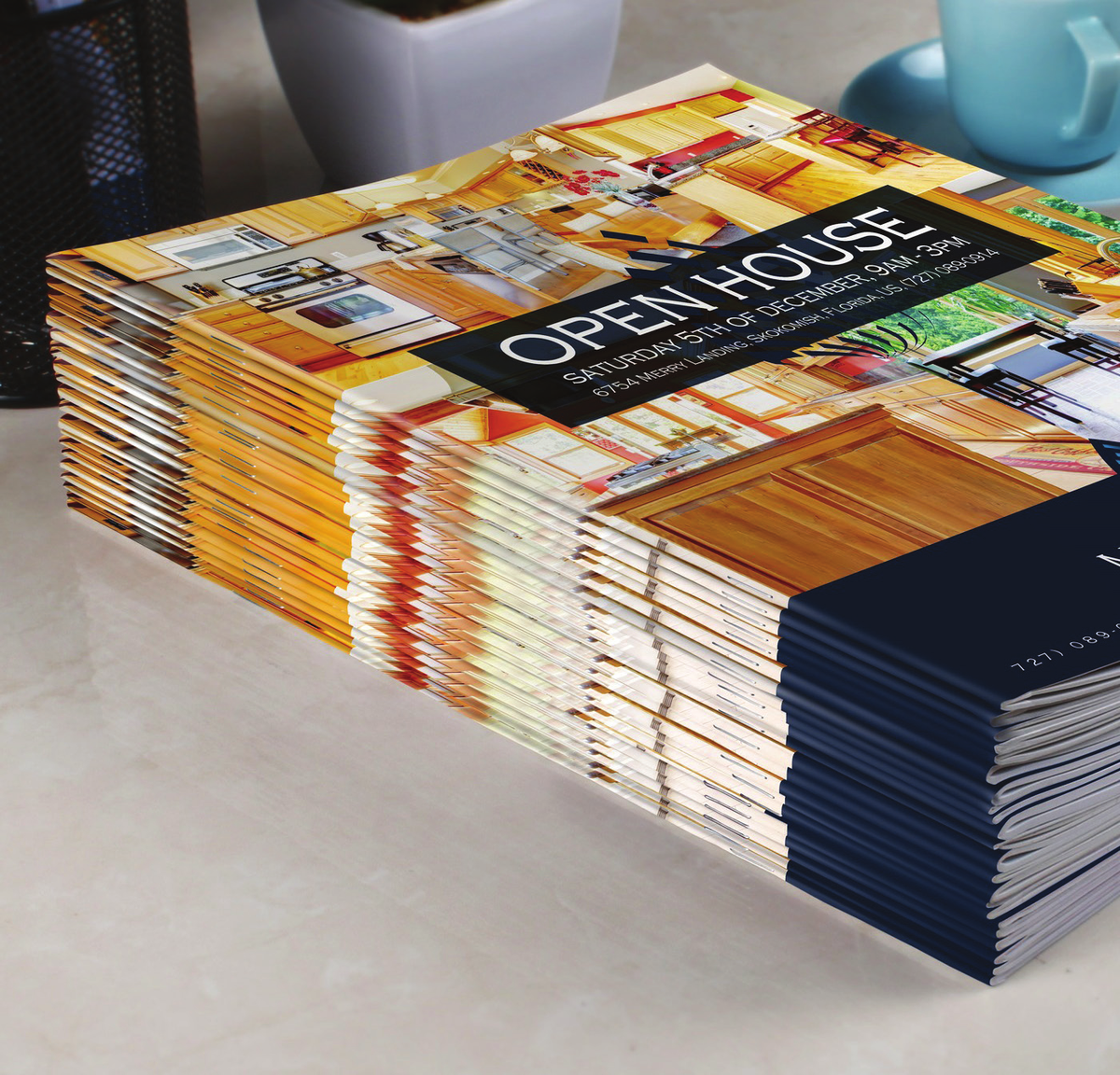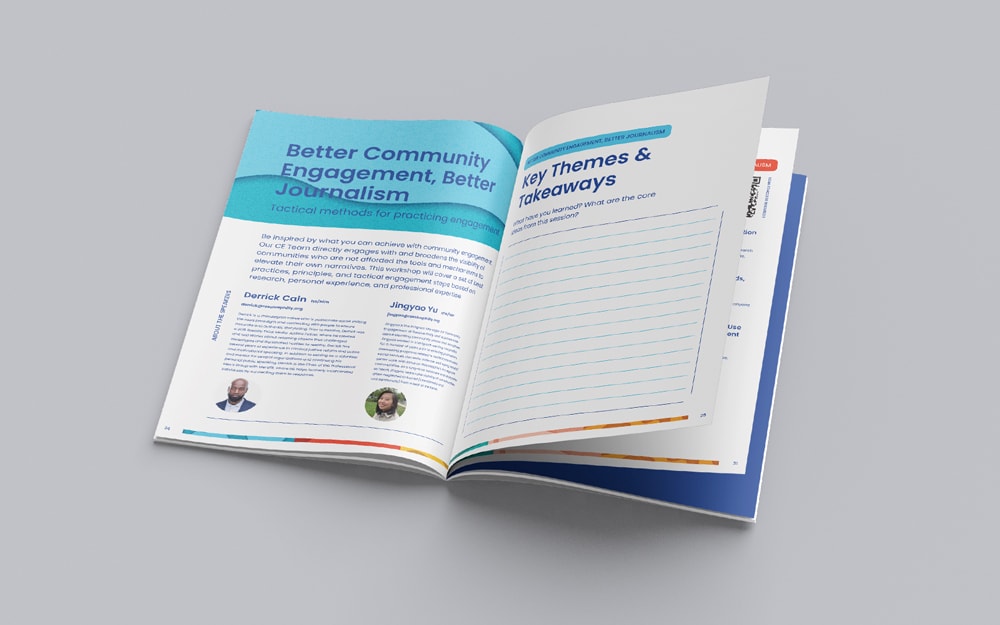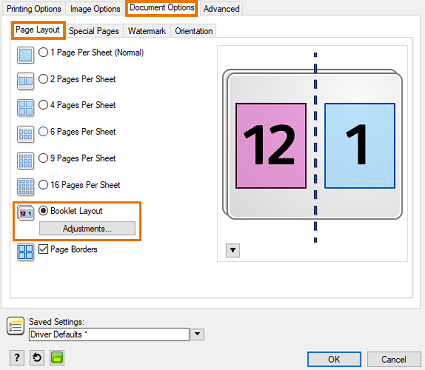7 Must-Know Tips for Affordable Booklet Printing Solutions
7 Must-Know Tips for Affordable Booklet Printing Solutions
Blog Article
The Vital Overview to Understanding Brochure Printing Options and Techniques
The procedure of brochure printing includes numerous factors to consider that can greatly impact the final product. From choosing the appropriate format and size to understanding the nuances of binding methods, each choice plays an essential duty. Additionally, aspects such as paper stock and printing strategies more influence the performance of the booklet. As one navigates these choices, it ends up being crucial to grasp just how they adjoin and what that means for the general result.
Understanding Pamphlet Formats and Sizes
When thinking about brochure printing, recognizing the different layouts and sizes readily available is crucial for accomplishing the desired discussion. Booklets can be generated in many formats, including saddle-stitched, spiral-bound, and perfect-bound, each offering unique advantages. Typical sizes range from standard letter (8.5 x 11 inches) to smaller sized choices like A5 (5.8 x 8.3 inches), allowing for adaptability based upon web content and target audience.Selecting the ideal size can influence both the layout and viewers interaction. Larger dimensions might suit visually driven content, while smaller layouts may be a lot more easy to use and portable. Furthermore, the variety of pages impacts the choice of binding technique, as thicker booklets may require sturdier bindings. Inevitably, understanding these facets permits a much more customized approach, ensuring that the end product straightens with the intended message and aesthetic, enhancing the general efficiency of the interaction.
Picking the Right Paper Supply

Binding Techniques: Alternatives and Considerations
When it concerns binding approaches for booklets, a number of alternatives are available, each with distinct benefits. Saddle stitch binding provides an economical solution for thinner booklets, while ideal binding techniques supply a more refined seek thicker magazines. Wire-O binding stands apart for its resilience and convenience of usage, making it perfect for files that need adaptability.
Saddle Stitch Binding
Saddle stitch binding offers a functional and economical solution for putting together brochures, making it a preferred selection amongst authors and services. This binding approach entails folding sheets of paper in fifty percent and stapling them along the fold line, developing a cool and organized appearance. Normally appropriate for brochures with a lower page count, saddle sewing is ideal for magazines, sales brochures, and educational products. The simplicity of this strategy allows for fast manufacturing and is usually preferred for brief runs or marketing products. It is vital to note that saddle stitch binding might not be appropriate for thicker brochures, as the spine may not hold up under enhanced weight. Overall, it continues to be a trusted choice for many printing tasks.
Perfect Binding Methods
Perfect binding is a widely made use of method that offers a professional and sleek finish to pamphlets and publications. This technique entails gluing the pages with each other at the back utilizing a strong adhesive, allowing for a tidy side and the capability to hold a bigger variety of pages contrasted to saddle stitching. Perfect binding is specifically appropriate for thicker pamphlets, such as directories and annual records, where a sturdy, flat back is preferred. Furthermore, it uses the choice for a published cover that can be developed to improve aesthetic allure. Factors to consider such as page count, paper weight, and the meant usage of the brochure must be taken right into account, as they can impact resilience and general top quality.
Wire-O Binding Options
Wire-O binding, known for its sturdiness and flexibility, uses a superb option for booklets that need simple page transforming and a specialist look. This binding approach uses a series of steel loopholes that hold web pages firmly, permitting them to exist level when open. It is especially ideal for presentations, catalogs, and guidebooks due to its robust nature. Wire-O binding is offered in numerous shades and diameters, fitting different web page counts and densities. Furthermore, it permits the inclusion of covers and tabs, boosting the pamphlet's general aesthetic. Considerations for Wire-O binding include the selection of wire shade, the dimension of the loops, and the extent of customization wanted, all of which can profoundly affect the end product's look and capability.
Digital vs. Offset Printing: Which Is Best for You?
When picking a printing approach for pamphlets, comprehending the differences in between digital and offset printing is important. Digital printing utilizes modern-day technology to generate high-grade prints rapidly and cost effectively, making it optimal for short runs or tasks needing fast turn-around times. It permits customization, providing the capability to print on-demand with marginal waste.In comparison, balance out printing is a traditional approach that stands out in generating large amounts with constant high quality. It involves moving ink from a plate to a rubber blanket, after that to the paper, which results in vivid colors and exact information. Nonetheless, balance out printing typically requires longer arrangement times and is more economical for larger volumes.Ultimately, the option in pop over to this site between electronic and balance out printing relies on project demands, spending plan, and desired amount. For small, time-sensitive projects, digital may be the most effective option, while balanced out might be preferable for larger, premium manufacturings.

Creating Your Pamphlet: Tips and Finest Practices
When creating a pamphlet, mindful focus to design, font style selection, and color usage can substantially enhance its effectiveness. A well-structured format overviews the visitor's eye, while suitable font styles ensure readability and convey the desired tone. In addition, reliable usage of color can stimulate feelings and emphasize vital information, making the total style much more impactful.
Choosing the Right Format
Just how can one properly select the best layout for a pamphlet? Initially, it is necessary to review the brochure's purpose and target market. A tidy, organized format enhances readability and involvement. Using a grid system can aid in straightening aspects consistently, developing a professional look. Additionally, incorporating aesthetic hierarchy with varying dimensions and positionings of images and text can direct the reader's eye and emphasize key information. It is additionally crucial to leave adequate white room, which avoids overcrowding and permits far better focus. Ultimately, evaluating different formats through mock-ups can supply insight into just how the design does in real-world circumstances, guaranteeing that the last product satisfies both visual and functional requirements.
Selecting Ideal Fonts
A well-chosen font style can considerably boost the total layout of a booklet, matching the design and strengthening the material's message. The choice of fonts ought to think about readability, specifically for body message, as it assures the information comes to all viewers. Sans-serif fonts are frequently preferred for digital layouts, while serif fonts can offer a conventional feeling in printed products. It's a good idea to limit font options to two or three to keep aesthetic comprehensibility. In addition, font style size plays an essential function; headings must be not frustrating yet unique, while body text must fit for reading. When picking typefaces, positioning with the brochure's theme and target audience is crucial for reliable communication and aesthetic allure.
Reliable Use Shade
Shade functions as an effective device in brochure layout, directing and forming understandings reader feelings. It can evoke feelings of enjoyment, peace, or depend on, depending upon the hues picked. Designers must take into consideration color concept principles, making certain that the selected scheme aligns with the brochure's message and target market. As an example, making use of warm colors like red and orange can develop urgency, while cooler tones like blue and eco-friendly foster tranquility.Additionally, comparison plays a vital duty; complementary colors can boost readability and aesthetic appeal. Uniformity in shade use across pages even more enhances brand name identification and communication. Inevitably, reliable shade implementation not just captures attention but likewise strengthens the brochure's function, making it a crucial aspect of effective layout.
Finishing Touches: Coatings and Unique Impacts
While several take into consideration the web content and format of a pamphlet one of the most essential elements, the finishing touches, such as finishings and special effects, play an important role in enhancing its total appeal. Coatings can offer protection and resilience, ensuring that the booklet holds up against deterioration. Matte finishes offer an innovative, non-reflective surface area, while glossy coverings can make colors show up even more lively and captivating. Unique impacts, like embossing or aluminum foil stamping, add a responsive dimension that can develop an unforgettable impression. These techniques can highlight particular areas, attracting interest to important details or producing visual interest. In addition, UV finish can offer a high-shine coating that raises the overall look.Together, these ending up touches not only boost the brochure's aesthetic however also interact professionalism and trust and focus to information, ultimately leaving an enduring effect on the viewers.
Cost Considerations for Brochure Printing
Comprehending the various price considerations for pamphlet printing is necessary for companies and businesses intending to maximize their budget plans. Trick factors influencing prices consist of the choice of paper, binding, and ink techniques. Greater quality materials, such as superior paper or specialized inks, commonly boost the total expense. Furthermore, the dimension and web page matter of the brochure play a substantial role; larger pamphlets need even more sources and time to produce.Another crucial factor to consider is the printing technique, whether digital or balanced out, as each has its very own prices framework and suitability for different amounts. Organizations should also factor in design expenses, which can differ based upon intricacy and making use of specialist solutions. Inevitably, shipping and handling fees can include in the total amount, especially for large orders. go to the website By evaluating these elements, companies can make enlightened choices that straighten with their monetary capabilities while accomplishing the wanted top quality in their published products.
Regularly Asked Inquiries
What Are the Ecological Effects of Brochure Printing?
The environmental influences of brochure printing include deforestation from paper production, carbon emissions from transport, and waste generation from thrown out products - Booklet Printing. Lasting methods, such as using recycled paper and environmentally friendly inks, can reduce these effects
How Can I Make Certain Color Accuracy in My Booklet?
To assure shade accuracy in a booklet, one should make use of adjusted screens, utilize expert color accounts, carry out test prints, and select top quality printing solutions that supply color matching and proofing alternatives for Recommended Reading finest outcomes.
What Is the Typical Turnaround Time for Booklet Printing?
The normal turn-around time for pamphlet printing varies depending upon the intricacy and quantity - Booklet Printing. Usually, it varies from a couple of days to two weeks, affected by variables such as printing approaches and ending up requirements
Are There Minimum Order Quantities for Brochure Printing?

Can I Print Brochures in Numerous Languages?
Printing booklets in several languages is feasible. Several printing services provide alternatives for bilingual or multilingual designs, permitting reliable interaction. Careful planning assurances that make elements accommodate different languages without endangering readability or appearances. Additionally, factors such as paper stock and printing methods more affect the effectiveness of the booklet. When considering booklet printing, comprehending the different layouts and dimensions readily available is essential for achieving the desired presentation. When selecting a printing technique for brochures, recognizing the distinctions between digital and offset printing is important. Furthermore, the size and page matter of the pamphlet play a considerable duty; bigger brochures call for even more resources and time to produce.Another crucial factor to consider is the printing technique, whether electronic or countered, as each has its very own pricing structure and viability for various quantities. The environmental effects of booklet printing include logging from paper manufacturing, carbon emissions from transportation, and waste generation from thrown out products.
Report this page